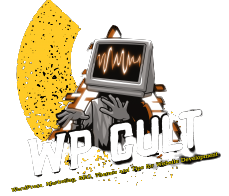Articles
Looking for the right plugin?
Well, I hope many of you have been using the WordPress plugin directory. It’s a grand location where you can find endless plugin for your WordPress blog.
But sometimes you don’t exactly get what you search for, but according to mdawaffe on WordPress, they have implemented a new open source MySQL text search engine. Well go on, test it out.
Guest Post
The following 5 factors detail the key techniques to influence and improve your ranking on Google.

It is essential to draw people’s attention to your website or blog. It isn’t easy to build a reputation online as a credible source of information, but it is possible to do this. For example, Google can recognize when an article is stuffed with keywords or has been subject to “spinning” techniques. In addition, major search engines know that web users trust the information they derive from the internet.
 Considered the “currency of the internet,” Inbound links to your website provide opportunities for achieving and maintaining a high search ranking. One way to achieve these links is to write guest posts and original, well-researched work that people will want to share and reference.
Considered the “currency of the internet,” Inbound links to your website provide opportunities for achieving and maintaining a high search ranking. One way to achieve these links is to write guest posts and original, well-researched work that people will want to share and reference.
The following five factors detail the fundamental techniques to influence and improve your ranking on Google.
1. Relevant Content
Your readers should inspire the content of your writings. By looking at keyword research and investigating popular topics amongst your social media followers, you will ensure that your blog ideas are not old-fashioned. It is still important to use Social media platforms but advising that people sign up to MySpace will not be as insightful as it was six years ago. Only 3% of first-time visitors to websites make a purchase; when they approach your site, they are probably still in the research stages of their investigations.
2. Blog size
Ask yourself if you have taken enough time to write about a subject in depth. The SEO experts recommend that 600 words are the ideal length for Blogs, but this is only a guideline, and it should be influenced by the inclusion of valuable content for the reader. Valuable content is more than just correct formatting and editing; it enhances the reader and provides them with food for thought and ideas that they can put into action in their own lives. Hubspot is a marketing software company that successfully achieves many inbound links because its content is enriched. Their posts usually are between1000-1200 words in length.
3. Your work is overlooked
It would be best to employ tactics to make your writings stand out. Think about a new slant that you can provide on a subject. This is your best chance of encouraging inbound links and attention. Offering a new perspective is especially important when you cover topics already done before.
For example, your responses to popular news topics should be well thought out and thought-provoking. It would help if you also opened yourself up to creative techniques such as bringing together two wildly different ideas as a topic of conversation or injecting humor into a subject.
It would be best if you aimed to get your point of view across in an interesting way and create a voice for yourself, your work is an extension of your brand, and the style you wish to portray should be considered. For example, Hollis Thomases of Inc.com is a Small business specialist who has been known to stir up some controversy with his musings from time to time.
4. Looks are important
Consider the appeal of your writings, on the whole, compare your work to that of your competitors and ask yourself what the attraction of your writings might be over the alternatives. Of course, your blog’s title is important too, and you should consider enabling social media shares that will be displayed within googles search results.
Infographics and great screencaps of places around the web are also prevalent ways to attract inbound links.
5. Be a credible Source
People who link to your content demonstrate that they trust your work as a correct source of information. They appreciate that you have adequately researched your topics, and they are willing to use your work as a reference. This is essential to establishing credibility on the web. Questionable content rarely leads to the creation of inbound links.
- You will need to collate data from trustworthy and original sources. Look for new studies that you can analyze. This is a neat trick to attract attention and a sure-fire way of attracting inbound links.
- Is the content professional? Some organizations entertain humorous content marketing, which can be risqué at times with a casual tone, but this should not be an excuse for sneering on contemporaries or for disclosing sensitive data.
- Keep up appearances by posting and updating your information regularly, and be sure to keep your website easy to navigate. Provide access for other bloggers and users to view your credentials quickly and easily. Your business website needs to be a source of information that people feel that they can trust.
Attached Images:
 License: Creative Commons image source
License: Creative Commons image source
About Author: Serge is the co-founder of giftideas.ws, a gift recommendation engine with a human touch such as this designer cocktail shaker.
Guest Post
Futuristic Cars Make Parking a Piece of Cake

Cars are one of those things that so many of us have that have been changing drastically in recent years. We are completely shocked by just how much cars have evolved in recent years and how far they seem to be able to go. It’s as though we have barely reached the tip of the iceberg when it comes to what is possible.
Technology is something we are completely fascinated with and excited by and that’s why today we thought we would discuss with you a few ways that cars can actually assist you in parking. While many people aren’t yet comfortable with the idea of car parking for them, you may enjoy some of the other ways cars can at least make parking much easier for you and your family. At the end of the day, the most important thing in life is your safety and the safety of your family so sit back, relax and we hope you get as excited about these recent updates as we were when we first found out.
Cameras That Give You a Second Pair of Eyes
Especially for families who have children and pets, you can never be too safe when it comes to both parking and reversing out of your driveway. What better way to stay on top of things than to have a camera installed in the back of your car? This way, you are never going to have to worry about whether or not you have enough space behind you or if there is anything in your way. With this help, you are never going to feel as though you are alone and you’ll always have assistance whenever you need it most. Parking and reversing are two of the hardest things for most of us so we are very glad these changes have been made.
Cars That Literally Park for You
If parking isn’t exactly one of your favorite things to do then you are going to be excited to hear that you can actually let your car do all the work for you. Of course, you are going to need quite a bit of money to afford such a car but they do exist. We figure if you have the money to spend; why not go all out? Someday, cars are going to be able to drive for us and while these advancements scare many people, they are something we are very excited about. Not only can your car help you park, but it can assist you by telling you what is on your left and right; all while allowing you to see behind you. With so much safety, you shouldn’t be intimidated by parking any longer because it’s as though you are never truly riding alone. Plus, cars these days come with phones so if there’s an emergency, you’ll have help on the way in no time. Many cars even call 911 for you if there is a crash in case you aren’t able to.
Cities That Help You Locate That Perfect Parking Spot
Many cities have been doing their part lately in order to make parking easier than ever. They recognize that parking accounts for most traffic and since it takes at least 5 minutes to find a single space and as much as 15 minutes; you can imagine how this ‘simple’ change is going to greatly simplify life for everyone involved.
What the cities that have the funds have been doing is installing pressure sensors in parking spaces so they can track where spaces are in use. This gives updated information which is sent to a control center and local signs that help to direct you to open spaces; saving you time and gas.
Applications to Track Parking
To take this technology to the next level, there are actually applications that you can download on your cell phone that help you not only track the real-time information as to where parking spaces are located but also allows you to pay for your parking space before you even arrive. Especially if you are looking for parking at a busy place such as an airport, you are going to be amazed by just how simple the whole process is.
Never Question Whether or Not the Coast is Clear
What we love most about these latest changes in-car technology is the fact that they make life much easier and safer for everyone involved. No longer do you have to worry about parking properly. This is going to help keep your family, children, and pets safer than ever and when you are in a hurry; you are going to be able to get where you are going without needing to worry too much in advance. You’ll be able to sleep much better at night.
Harry Williams is the writer of this informative article. He works with the Southern Cross Chauffeur Drive Services which provides professional and personalized chauffeur-driven car hire service.
chauffeur driven car hire service.
Guest Post
Roles may change: Google and Facebook may hit financial services

The world needs great financial players, so Google and Facebook say ‘we are there at your service’, just check ‘what’s on your mind’, and then ‘search’ for results.
Though the blabber of these Search Engine tycoons to land on the runway of Financial Services are lined up in the market but Gartner clarifies that the result won’t be traditional banking stuff.
Also, the market astrologers clear the view showing that Facebook and Google won’t be opening their ends with banking but still confirms to be a rivalry power in the financial market. This jump is unlike Apple’s hype about “digital mega-firms”.
David Furlonger, the vice president of Gartner predicts an evolution to strike the internet “continued to raise questions about the continued viability of brick and mortar establishments in retailing and financial services”.
He further justifies his words and said the internet companies may face this just because they work “as the commercial enterprises of the future”.
The discussion even adds a few more lines; he said that as far as competition is concerned retail banking will be a safer option as “it would be like trying to hammer a square peg into a round hole”.
He recommends his words for approval by adding “this just does not fit”.
Gartner then moves forward more profoundly that digital companies had many favors served in their platter including data management and analytics expertise. It added such companies were also adept at extending their value chain analysis beyond the core offering, this was processed to grab better business opportunities and a higher level of customer satisfaction.
The contradicting fact that really throws a ball of fire is that these companies lack intellect or experience in in-depth security which is not at all a favoring genre for all the banking applications.
Though the favors offered by Google and Apple were very well aware of the security and privacy needs of customer data. But the fact is still the mere one that this industry needs perfection and a newcomer doesn’t offer the needed amount.
As the age-old market trends show that the newcomers cannot be the rulers, so specifying the fact that the new kids may also struggle too.
To bring a better verdict, they need to show a stable performance to hike up in the market. Regulatory compliance was also said by the company to prove tough hours when they are required to report financial regulators.
Mr. Furlonger still adds a surveyed view that “as a result, digital mega-firms would alter and shape the market by helping it develop and change by making customers better informed and occasionally making catalytic forays into the market with niche financial services offerings.
So it hardly matters who is the new power in the market the fact remains the same that traditional banking did well, is doing well, and will retain to do well.
-Authored by Sara Bruce. She is an SEO analyst and an avid blogger. If you come across any negative reviews about your Business/Services do visit our pages on ‘Remove negative reviews’ & ‘Remove rip-off reports’ to get rid of it.
-
Tips & Tricks1 week ago
WordPress Security Hacks
-

 Pages3 months ago
Pages3 months agoWrite For Us – Guest Post
-
Showcase3 months ago
StylizedWeb.com
-
News2 months ago
How to: Show/Hide any div box with jQuery in WordPress
-
Tips & Tricks2 months ago
Remove the title attribute using jQuery
-
Tips & Tricks7 months ago
How to: show/hide a widget in WordPress with jQuery
-

 Plugins7 months ago
Plugins7 months agoTop Membership plugins
-
Tips & Tricks3 months ago
Limit the characters that display on the_title















WPThemeSupport
February 20, 2009 at 12:22 am
The new search upgrade is a huge improvement. Now when you search for a plugin you get relevant results instead of a list of the popular plugins and then slighly related plugins.
I am just surprised that it took them so long considering that they just only recently enabled plugin installation/search through the WP dashboard.
WPThemeSupport´s last blog post..Create A Custom Post Message With Shortcodes
frosty
February 20, 2009 at 5:30 pm
Right, but looks like the newly open source MySQL text search will be improved even more once it can search author names and tags.